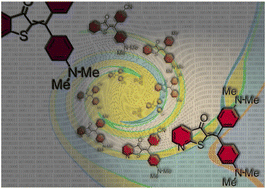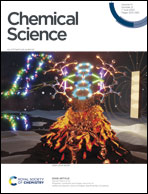A cross-conjugation approach for high-performance diaryl-hemithioindigo photoswitches †
Abstract
Diaryl-hemithioindigos (diaryl-HTIs) are derivatives of a novel class of highly functionalized indigoid chromophores. In this work a systematic study of the electronic effects on their photoswitching reveals the design principles for achieving an excellent property profile. Two key elements need to be invoked for perfect diaryl-HTI performance, first introduction of strong electron donors and second establishment of cross-conjugation. The resulting photoswitches combine high thermal stability, large extinction coefficients, red-light responsiveness, pronounced photochromism, and strong isomer accumulation in the photostationary states with precise geometry changes. By using the inherent basicity of their strong electron donor moiety, diaryl-HTIs can be rendered into very potent tools for molecular logic applications. We demonstrate a variety of binary logic setups as well as sophisticated three- and four-input keypad locks for sequential logic operations. Three distinct states and up to four different stimuli are invoked for this multi-level molecular information processing. Diaryl-HTIs have thus entered the stage as very capable and promising photoswitch motives for anyone interested in reversible visible- and red-light as well as multi-stimuli responsive molecular behavior.



 Please wait while we load your content...
Please wait while we load your content...